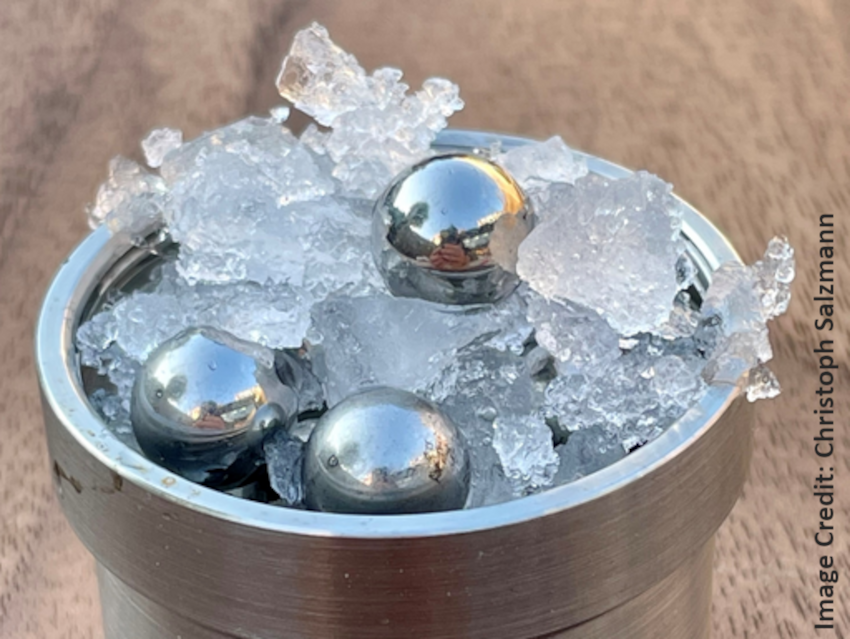Water ice can have many different structures. There are 20 known crystalline phases of water ice and at least two families of amorphous forms. Unlike “common” ice, whose molecules are regularly arranged in a hexagonal lattice, amorphous forms lack a highly ordered crystalline structure. Although almost all frozen water on Earth exists as crystalline ice, amorphous ice is the most common form of ice in the Universe.
In general, amorphous ices are distinguished by their densities, with low-density amorphous ice (LDA) showing a density of 0.94 g cm–3 and high-density amorphous ice forms (HDAs) starting at 1.13 g cm–3 at ambient pressure and 77 K. So far, neither crystalline nor amorphous ices had a known form with a density near that of liquid water (1 g cm–3)—a “density gap”.
Angelos Michaelides, University College London, UK, and University of Cambridge, UK, Christoph G. Salzmann, University College London, and colleagues have found that ball milling “ordinary” hexagonal ice at 77 K leads to a “medium-density” form of amorphous ice (MDA) with a density of 1.06 ± 0.06 g cm–3. The ball-milled ice was characterized using optical imaging, density measurements, compression experiments, differential scanning calorimetry (DSC), X-ray diffraction, Raman spectroscopy, and small-angle X-ray scattering (SAXS), as well as studied with computational methods.
The findings suggest that water is more complex at low temperatures than previously recognized, which has implications for the understanding of water and its anomalies. According to the researchers, the results raise the possibility that MDA is the true glassy state of liquid water.
- Medium-density amorphous ice,
Alexander Rosu-Finsen, Michael B. Davies, Alfred Amon, Han Wu, Andrea Sella, Angelos Michaelides, Christoph G. Salzmann,
Science 2023, 379, 474–478.
https://doi.org/10.1126/science.abq2105




